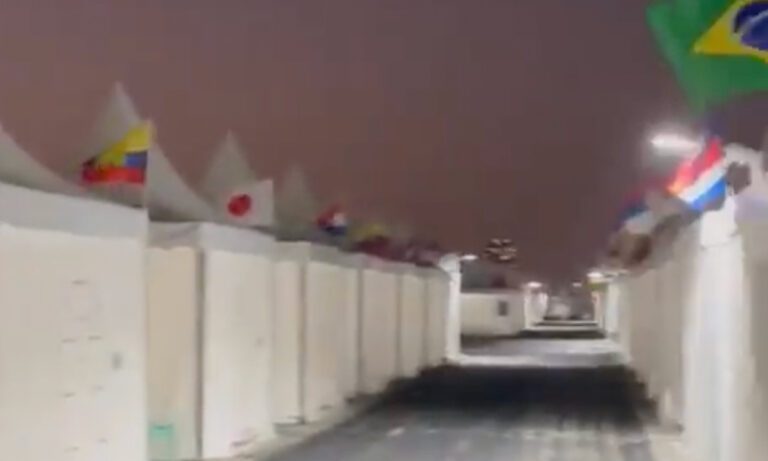Leaked footage of Qatar’s 2022 FIFA World Cup tent village is giving Fyre Festival energy

As the highly anticipated—and, for some, dreaded—2022 FIFA World Cup is finalising last-minute details ahead of its kick-off on Sunday 20 November in Qatar, a leaked video has been stealing the tournament’s thunder after it rapidly gained some traction online.
The footage in question revealed the sketchy living conditions that many fans who opted for alternative options to staying at hotels will have to settle for—and we’ll be honest, it’s not looking good. So much so in fact that many netizens have been quick to compare the fan villages which were originally advertised as luxurious desert getaways to the catatonic mess that was the fraudulent Fyre Festival.
Because there weren’t enough hotel rooms to host the expected amount of fans—more than a million visitors—the event’s organising committee offered stand-in accommodation built specifically for the month-long tournament.
Among some of the villages being advertised to football enthusiasts is the Fan Village Al Khor, where a tent starts at around $424 per night—a hefty sum that was somewhat justified by the luxurious promotional images that first circulated. Other reports have stated that some of the tents could be rented for around $200 a night.


However, as the now-viral video revealed, it seems pretty clear that what was pitched to fans will not become reality for the unlucky ones who chose this accommodation option. Instead, the footage showed a village that consisted of hundreds of tents with nothing but a couple of beds and a nightstand placed in them.
The obvious lack of furniture put aside, the tents hardly seemed to hold up to the strong Qatari winds. Oh, and they were located just off highways and near aeroports, so the noise is bound to be unbearable too.
Fans rooms in Qatar. pic.twitter.com/detQFVVkvR
— SPORTbible (@sportbible) November 15, 2022
It’s not surprising then why people have linked the underwhelming accommodations to the most-talked festival experience of 2017, Fyre Festival. Advertised by famous faces including Kendall Jenner, Bella Hadid, and Hailey Bieber, it was sold as a glamorous party on a deserted island.
Tickets cost up to $100,000 and guests who booked were promised luxury accommodation alongside “the best in food, art, music, and adventure” in the dreamy Bahamas. Instead, they arrived and were faced with mattresses on rain-soaked floors, meals of cheese slices on dry bread, and didn’t even have access to their own luggage.
Speaking of the recent footage, one Twitter user wrote: “This screams Fyre Festival vibes.” Another echoed: “Did they hire the Fyre Festival guy to arrange this?” “This is a disaster waiting to happen,” warned a third.
“Everyone should stay away. Looks like a good place to disappear and get sold,” concluded yet another.





